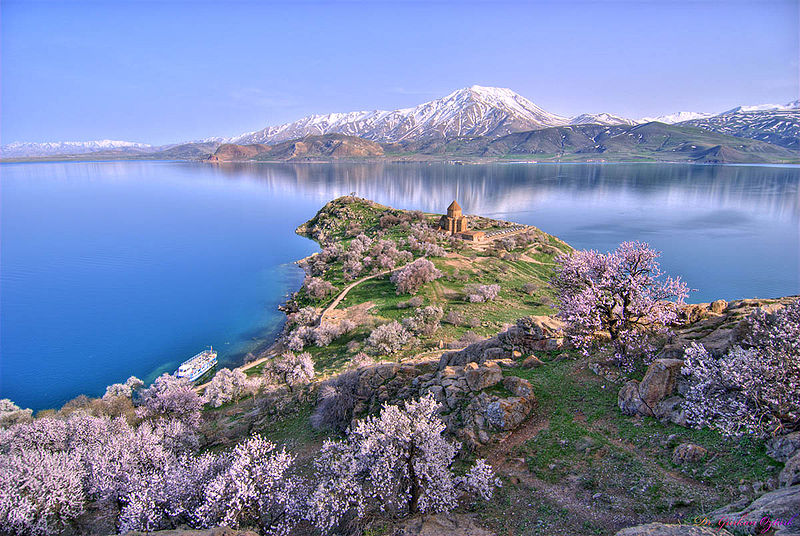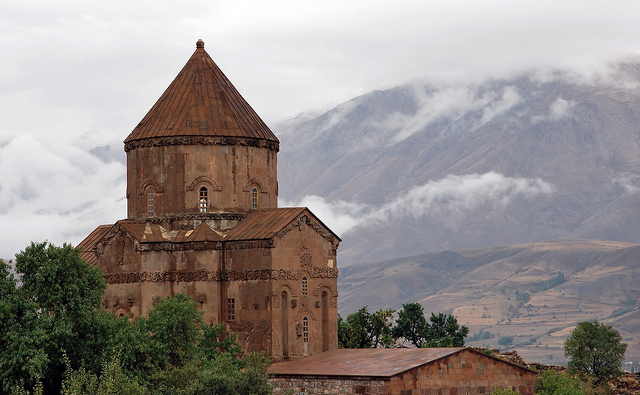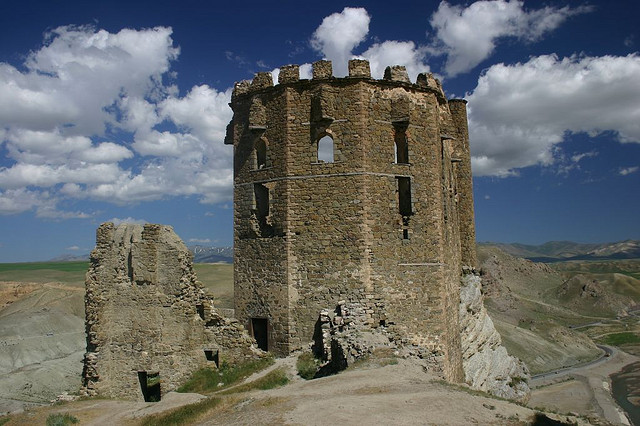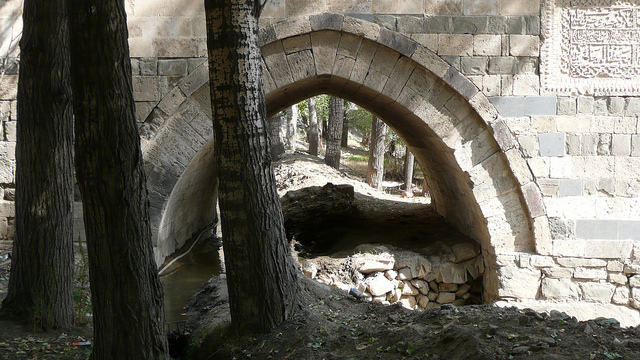Van is a city in Eastern Turkey, with unique quirks, one of which is the rare breed of cats that, interestingly, inhabit around Lake Van. Van cats have curious different-colored eyes – one, amber and one, blue – and more curiously, a fondness for swimming in the vast Lake Van.
Apart from exotic cats, Van prides in its deep-rooted history that goes as far back as 5,000 BC. Different civilizations and kingdoms shaped Van’s history – Urartian, Armenian, Byzantine, Seljuk and Ottoman.
Each of these eras left remarkable structures such as the Van Fortress (Urartian) and the Holy Cross Church (Armenian). Nature has also blessed the town of Van, with a lake that is the largest body of water in Turkey.
Things to Do and See in Van
Van Museum
The Van Museum in the pleasant town of Van houses artifacts dating from significant eras in the history of Turkey – prehistoric, Urartian and Ottoman Turk eras. An interesting section of the Van Museum is the Genocide Section, from which you’ll learn about the bloody massacres that occurred in the region.
The museum is divided into different sections; in the inner courtyard are cuneiform tablets and Hakkari Stelae; at the yard are Urartian gravestones with inscriptions; on the lower level are terracotta potteries, Urartian gold jewelry and bronze artifacts and on the upper level are more potteries, ancient coins and manuscripts.
The Citadel of Van
Overlooking the ruins of the 3,000-year old town of Urartu is a colossal stone fortress called the Citadel of Van. Built between the 9th and 7th centuries BC, the Citadel of Van is the largest stone fortress there is, made out of basalt (foundation) and mud-bricks for the main areas.
Within the vicinity of the citadel is the Sardur Tower, which bore inscriptions of the beginnings of the ancient kingdom of Urartu. The inscription was written in three languages – Old Persian, Babylonian and Elamite by Xerxes the Great in the 5th century BC. Throughout the millennial, the inscription has survived all elements and is in perfect condition.
The Island of Akhtamar

Legends have it that the name of the island was born out of love. There was a man who fell in love with a girl from the island. Every night, he crossed the Lake Van to see her and then one time, he braved the rages of the storm but his boat sank and while he fought the violent waves, he was calling out to the girl Tamar, “Ach Tamar” (Oh, Tamar).
The main attraction of the island is the Armenian Cathedral of the Holy Cross, dating back to the year 915. The architecture of the church is notable, but more remarkable is the artworks on its external walls which are scenes that are lifted from the Holy Bible.
Holy Cross Church

The Holy Cross Church stands beautifully atop the island mountain of Aghtamar surrounded by the Lake Van. Built between the years 915 and 921 by Armenian architect Trdat Mendet, the Holy Cross Church is the island’s biggest attraction.
It reflects not only the importance of religion to the island, but also the profound significance of art and culture. The church had undergone a series of restorations, 2005 being the most recent. You’d still find the beautiful red tufa stones that were shipped from the quarries in neighboring islands and there is still much to appreciate about the frescoes inside the church. Its exterior is adorned with carvings that are depictions of Biblical scenes.
Hosap Castle

Erected on a rocky outcrop on the shore of the Hosap River is a splendid medieval castle, the Hosap Castle. Local legends state that the architect of the castle, Kurdish man Mahmudi Suleyman, had his hands cutoff by the authorities so he could no longer build another castle that would rival Hosap.
Built in 1643, the Hosap Castle is divided into outer and inner castles. Forty towers guard the outer castle, which has a mosque and several settlements. The inner castle, on the other hand, stands strategically on the peak of the outcrop. It has three walled courtyards, which are divided further into two levels. The lower level is where the guardhouses, the ramparts and the entrance are located, while the upper level has the Observation Kiosk.
Cavustepe

The ancient kingdom of Urartu is known for its formidable fortresses, one of which is Cavustepe, built for Sarduri II. True to the form of Urartian fortresses, the Cavustepe, also known as “Sardurihinili” (city built by Sarduri), is made out of cut stones. It is divided into lower and upper fortresses, with several buildings.
The upper fortress has a temple that was built in honor of the god Haldi. On the other hand, the lower fortress holds workshops and storage rooms for grains and wine in the ancient years. There is another temple in the complex of the Cavustepe, which was built for the god Irmushini.
Image Credits : Holy Cross Church and Cavustepe and Hosap Castle and “Akhtamar Island on Lake Van with the Armenian Cathedral of the Holy Cross” by gozturk
This is a guest post

